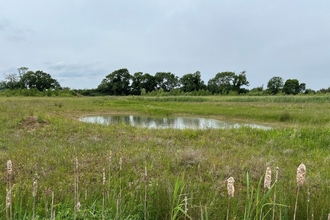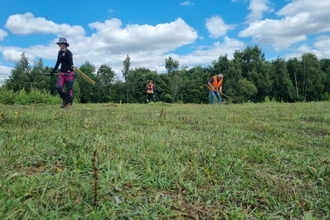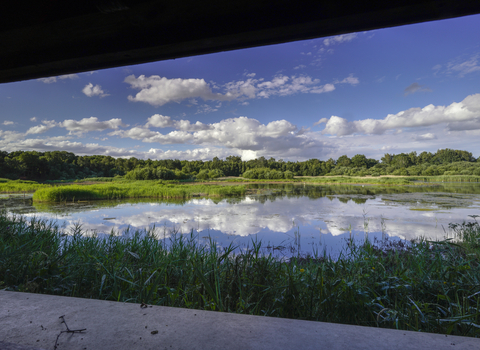
Jack snipe © Paul Paddock
Location
Know before you go
Dogs
When to visit
Opening times
We recommend half a day for a visit if you combine it with a visit to Potteric CarrBest time to visit
All yearAbout the reserve
Everybody needs good neighbours
Parson’s Carr is a young nature reserve, but one that’s already attracting interesting wildlife, and has great potential.
Part of a network of sites around Potteric Carr, it is a welcome extension of Potteric Carr's wetland habitat, allowing birds including avocets and marsh harriers to move between the two reserves. A colony of black-headed gulls has been quick to move in too, taking advantage of lakes that were created in 2017.
As you move away from the direction of Potteric Carr, there is wet grassland and previously arable land that has been turned to grass, attracting some bird species not found at Potteric Carr, such as yellowhammers. Brown hares have also been spotted in some of these grasslands, aided by the mixture of hedgerows, nearby fields and places to feed at night.
Bring some binoculars to watch birds on the lakes and islands, from common nesting species in spring to passage waders in autumn and wildfowl in winter. On calm, sunny days look for butterflies on the flowers besides the paths.
One to watch
New ponds with shallow, sloping sides will provide a haven for newts, dragonflies and waders. New hedges will provide additional homes, shelter and food for birds like linnets, reed buntings and yellowhammers, as well as small mammals.
The Trust will soon be introducing grazing by cattle and ponies on the reserve, contained within newly fenced off areas. Grazing will help to manage the drier areas, stop quick growing willows from taking over and provide attractive open habitat for nesting birds.
Parking and Access
Parsons Carr is a beautiful, wild part of the landscape, but it’s a little more remote and currently has no formal parking or surfaced access routes directly to the site. The tracks leading to the reserve are not owned or maintained by Yorkshire Wildlife Trust, so we recommend the following routes for a smoother and more enjoyable visit:
From Wadworth Village: You can park considerately in the village and walk approximately 1km down Carr Lane to reach the reserve.
From Potteric Carr Nature Reserve: Use the overflow car park and follow the bridleway past B&Q, around Carr Lodge, and across the M18 bridge – also about a 1km walk to the site.
Contact us
Seasonal Highlights
- Spring: Birds - Coot; Moorhen; Mute Swan; Yellowhammer
- Summer: Birds - Black headed gull colony; Avocet; Invertebrates - Common blue butterfly
- Autumn: Birds - Marsh harrier; Passage waders
- Winter: Birds - Wildfowl; Jack snipe; Little egret; Fieldfare; Redwing



